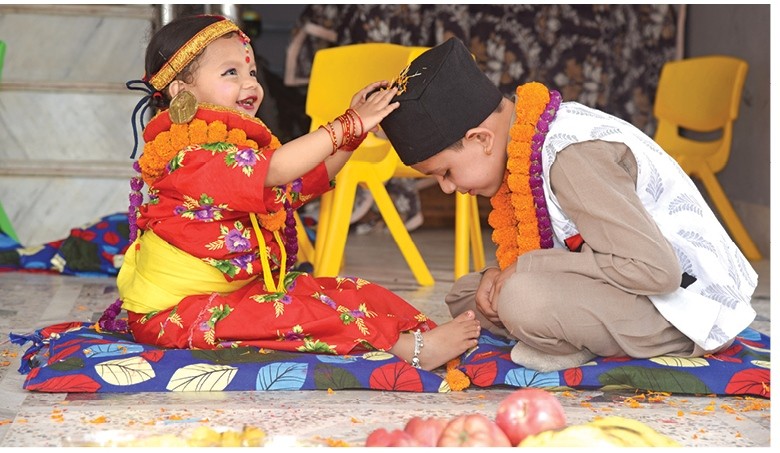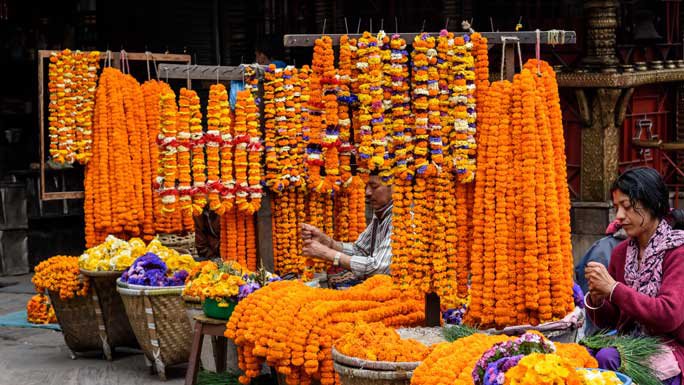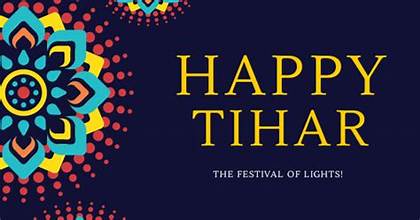Kathmandu, Nepal – Tihar, known as the Festival of Lights, is one of Nepal’s most significant and vibrant festivals, celebrated primarily by the Hindu community. This festival, often regarded as the second greatest festival after Dashain, unfolds over five days, each dedicated to honoring different animals, siblings, and the goddess of wealth.
Origin of Tihar
The origins of Tihar are deeply rooted in ancient Hindu mythology and agrarian practices. The festival celebrates the bond between humans and nature, as well as the divine. It is believed that during Tihar, the goddess Laxmi descends to the earth to bless homes with prosperity and wealth. This festival also honors the crow, dog, cow, and the bond between brothers and sisters.

Major Days of Tihar
Tihar spans five days, each with its own unique significance:
- Kag Tihar (Crow Day): The festival begins with Kag Tihar, where crows are worshipped, symbolizing the messengers of death. People offer rice, roti, and other foods to the crows in hopes of a good year ahead.
- Kukur Tihar (Dog Day): The second day is dedicated to dogs, which are honored for their loyalty and companionship. Dogs are adorned with garlands, and their foreheads are marked with red powder, while they are fed delicious treats.
- Gai Tihar (Cow Day): The third day is reserved for cows, regarded as sacred animals in Hindu culture. Cows are decorated and worshipped, and their dung is used to purify homes, symbolizing cleanliness and prosperity.
- Laxmi Puja (Goddess Laxmi Day): On the fourth day, devotees worship Laxmi, the goddess of wealth and prosperity. Homes are illuminated with candles and oil lamps, and colorful rangoli designs are created at the entrances to welcome the goddess.
- Bhai Tika (Brother’s Day): The final day of Tihar celebrates the bond between brothers and sisters. Sisters perform rituals for their brothers’ long life and prosperity, while brothers give gifts in return. This day signifies love, protection, and respect between siblings.
Activities During Tihar
Throughout the festival, homes are cleaned and decorated with lights, flowers, and rangoli designs. Families gather to prepare special festive meals, including traditional sweets like sel roti and various delicacies. Music and dance are integral parts of the celebration, with people singing festive songs like “Oda Bhuwa” and engaging in joyful gatherings.
Significance of Tihar
Tihar holds immense cultural and spiritual significance in Nepal. It emphasizes the importance of family bonds, respect for animals, and the connection between humans and nature. This festival fosters unity and harmony among communities, reminding people of their responsibilities towards the environment and their loved ones.
What Makes Tihar Unique?

Unlike other festivals in Nepal, Tihar uniquely blends religious rituals with a profound appreciation for animals. While Dashain primarily focuses on the goddess Durga and familial ties, Tihar encompasses a broader spectrum of relationships and interactions with nature. The festival’s emphasis on lights symbolizes the triumph of good over evil, making it a time of reflection, joy, and renewal.
Conclusion
As Tihar approaches, the atmosphere in Nepal fills with excitement and joy. This festival not only celebrates lights and colors but also reinforces the values of love, respect, and gratitude. Tihar remains a cherished occasion for Nepalis around the world, reminding them of the beauty of togetherness and the importance of celebrating life’s blessings.








प्रतिक्रिया दिनुहोस्